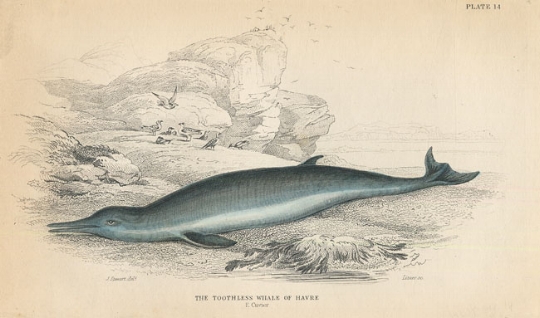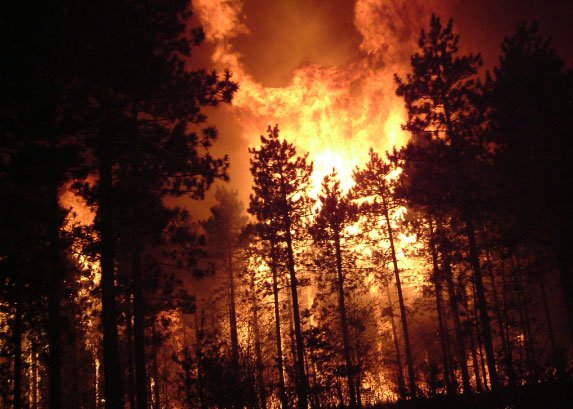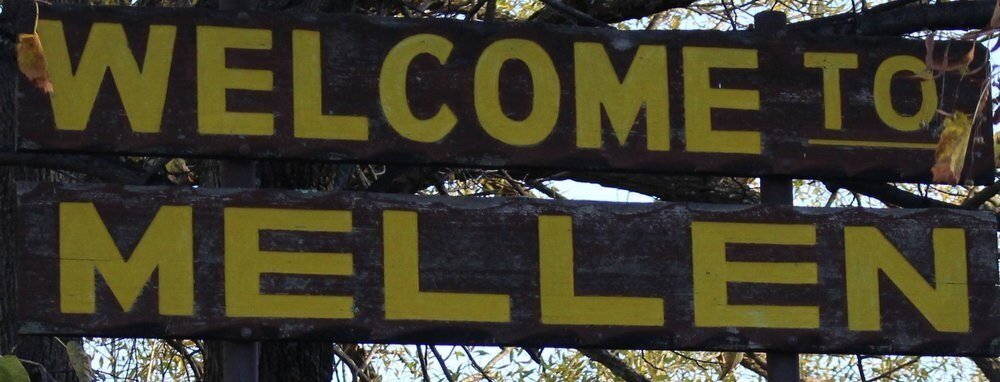Cryptid Profile: Philip H. Gosse's White-Flippered Whale
When one stops to truly think of how large the worlds combined oceans are, the outcome can be mind-numbing. It is believed that the total area covered by the worlds ocean is around 139.7 million square miles, which means that nearly 70% of the earth's surface is covered by ocean water. That is insane. And to further add to the astounding amount of numbers currently going through your head, it is believed that anywhere between 700,000 and one million species currently call the world ocean home, and of that total amount given, it is widely accepted that anywhere between one-third and two-thirds of those species haven’t even been officially verified, studied, or named yet!
So because the combined oceans of the world are so large, it is easy to see why some species within it may only be seen once, and then never seen again. There is just no physical way for a person (or group of people) to constantly be in an area where a potentially new species may suddenly emerge. It’s just too large of a space to cover. But sometimes, we don’t even have to try at all. Sometimes, people are just in the right spot at the right time to witness something truly amazing.
One of these amazing events took place in November of 1844 and was recorded by Phillip Henry Gosse in his book “A Naturalist’s Sojourn in Jamaica.” For those unaware, Philip Henry Gosse was an English naturalist, the inventor of the aquarium, and a pioneer in the advancement of marine biology. He was also a celebrated author, teacher, and was occasionally known by his nickname, “the father of Jamaican ornithology.”
Now, as you can see from above, Gosse was known for many amazing things in his life, as he should be. But for those in the field of cryptozoology, he is most well known for witnessing a group of creatures that would later be referred to as White-Flippered Whales. What makes this sighting so special in the cryptozoological field, besides the fact that it was of a potentially new species, is that usually sightings of unknown sea creatures involve just one animal by itself and for only a brief amount of time. But for this occurrence, the sighting involved a whole pod of creatures and is reported to have lasted an astounding and unheard of seventeen hours.
There, now that the required background information has been given and everyone is up to speed, let's dive into the sighting. While returning from a mission to Jamaica to collect various rare specimens of mollusks, reptiles, birds, and plants, Gosse reported encountering a group of large unidentified whales in the middle of the North Atlantic Ocean. The well-respected naturalist reported that the encounter took place between 3 and 4 pm and that the weather during the sighting was quite good, with only an exhilarating wind to speak of. Because of these favorable sailing conditions, the chance of misidentifying what he was seeing was quite low.
As the ship cut through the open ocean water, Gosse stated that the “herd” (Gosse’s description) of Cetaceans (upwards of 12+) appeared near the back of the ship and started to move in a way which made it seem like the animals were playing with each other. Their movements were said to be somewhat reminiscent of dolphins by how they jumped and frolicked, but the sea creatures were clearly not dolphins as they were much too large. These playful actions continued past sunset and only died down after there was nothing but moonlight covering the ocean.
During this time, Gosse stated that the herd of unknown animals continued to steadily follow the ship as it made its way under the stars. Amazed by what he was seeing, the naturalist watched as the large creatures raised their heads from below the surface and dove back down exposing large backs and small dorsal fins. Some would spin through the water and even others would swim on their backs entirely, thus exposing a pure white belly that shown brightly beneath the moonlight.
Along with the white color seen on the belly of the creatures, Gosse also reported that the flippers of the aquatic anomalies were pure white as well, but not just on the bottom, the white covered the entirety of both flippers top and bottom all the way up to the dark body. A characteristic that, while not uncommon, is generally not seen so uniformly among so many members of the same pod. While this was pretty unique in itself, white was not the only color reported on these creatures as Gosse wrote that while the overall body of the whale was black, the area around the mouth was a fleshy tan color. This made for a stark contrast when the animals would raise their heads out of the water.
The sighting of these creatures continued on into the next day and lasted for well over 120 miles before the group of unknown whales left the ship for parts unknown. Gosse and his fellow crewmen stood on deck and watched as the animal's dove beneath the surface of the water and disappeared from view forever. But just because the animals were gone didn’t mean that the documenting needed to stop. So the naturalist retreated to his cabin and put ink to paper in order to preserve the best possible details of the mystery animals for further future study.
When all is said and done, Philip Henry Gosse reported that in 1844, a large pod of unknown whales not only followed but played alongside his ship while in the middle of the North Atlantic Ocean. The largest of the creatures were described as being close to 30ft long, and they were all black in color. Apart from the overall black body, the animals possessed a striking white belly and solid white flippers. They also had a tan skin color around the area of the mouth.
The unknown whales possessed a somewhat small flat head and a long muzzle that tapered off at the end and was without furrows (the accordion-like folds in a whales throat that allow it to stretch open wide). The bodies of the animals were long and thin and they all possessed a small dorsal fin that sat quite far back in relation to the distance from the head. Even though the creatures did have blowholes, no water was ever witnessed spouting out from the top. Instead, the rushing sound of air was heard and that was all. While all the creatures were seen engaging in a type of play, only one of the whales was witnessed breaching the water and landing on its side. Those are the facts.
And there you have it, the only known sighting of the cryptid Cetacean known as The White-Flippered Whale. But is this truly the only sighting of this creature? And is it really a cryptid? While it may have been considered a cryptid creature at the time due to limited scientific knowledge regarding whales, some researchers (including Bernard Heuvelmans) believe that what Gosse actually witnessed was a Beaked Whale. Specifically either Gervais’ Beaked Whale (Mesoplodon europaeus) or Sowerby’s Beaked Whale (Mesoplodon bidens).
The reason for this theory is that both Gervais’ Beaked Whale and Sowerby’s Beaked Whale fit a majority of what was described in Gosse’s writings. The G.B.W. is known as the largest of toothed whales and is often described as being quite long with a dark skin tone overall. The head is also described as small and the mouth tapers at the end. The S.B.W. is reported to have a small circular head, a long snout, and has a dark skin tone on top with a lighter color below. Both species possess a small dorsal fin situated far back on top of their bodies and each is known to call the North Atlantic Ocean their primary home. Also, each species have been documented occasionally breaching the surface as well as swimming on their backs.
But for every trait of the two known whales that match that of the unknown whales, there is another that just doesn’t fit. For instance, both the G.B.W. and the S.B.W. have never been documented as having full white flippers, and neither species grow to a length over 18ft. The G.B.W. has a max length of 15ft for males and 17ft for females. The S.B.W. has a max length of 16ft for females and 18ft for males. Along with this, each species tends to travel in relatively small groups and often stays away from ships and people. They are described as being very reclusive creatures and when they are spotted, they typically only stay on the surface for a short amount of time before diving again. Finally, both the G.B.W. and the S.B.W. have never been described as being black in color, they are typically described as dark gray with light variations of gray on certain parts of their bodies.
Now, could these discrepancies between the known whales and the unknown whales simply be because of the year of the sightings as well as the setting in which they were spotted? Yes, they very well could be. While the S.B.W. was first documented in 1800, the G.B.W. was not discovered until sometime between 1836 and 1841, and even then it wasn’t considered a new species until 1855. Because of this, Gosse could have honestly spotted a G.B.W. and never would have known it was the same species already discovered a few years early since there was no official documentation on the creature available at the time. But again, that still wouldn’t explain away both the size of the creatures witnessed as well as the pure white flippers. And just like what usually happens with long ago recorded encounters involving cryptids, the problem goes full circle back to square one.
Could have Philip Henry Gosse encountered a new species of whale in the North Atlantic Ocean in 1844? Yes, he could have. Could he have simply run across an extremely rare species of known Beaked Whale? Yes, that is also a possibility. But with only the word of a respected witness from over 170yrs ago, we will just have to accept this sighting for what it is, a cryptid mystery.
-The Pine Barrens Institute
Image Credit: http://oldprintshop.com/product/118478?inventoryno=72321&itemno=2
Do you have a strange tale, family legend, or odd sighting you would like to report? Get in touch with us here to share what you know!
Want more strange stories in your life? If the answer is yes, then make sure to check out our books ‘Monsters In Print: A Collection Of Curious Creatures Known Mostly From Newspapers’ and ‘Ghosts In Print: An Assemblage of Spirits, Spooks, and Specters From Newspapers of Old’, both available from Amazon!
Make sure to also check out our shop for official PBI shirts, totes, buttons, and stickers!































